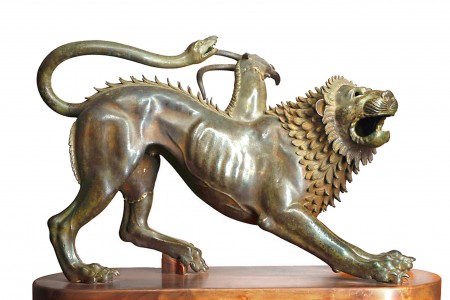May 10, 2015 – At the Salk Institute for Biological Studies, La Jolla, California, developmental biologist Juan Carlos Izpisua Belmonte heads up a team studying stem cells. Their most recent discovery, a previously unknown pluripotent stem cell that when injected into the right spot in a body can begin to grow a replacement organ. The name given to their discovery is Region Selective Pluripotent Stem Cells or rsPSCs in short. In testing on mice the scientists believe they ultimately will be able to use these types of cells to grow human organs creating chimeras.
What is a chimera?
In ancient Greek mythology a chimera was a monster combining a lion’s head, goat’s body and serpent’s tail. In human genetics a chimera is an individual containing two distinctive DNAs. What the scientists at the Salk Institute believe is they have discovered in rsPSCs a mechanism by which they can create artificial chimeras by introducing human cells into another species to grow human organs.
They currently are cultivating rsPSCs which they inject into 7.5-day-old mice embryos where they integrate to form chimeric embryos. This doesn’t happen generally throughout the mouse embryo but displays a region selectivity. Hence the name.
The potential benefit of being able to grow a human organ in an animal host and then harvest it for transplant is enormous. The organ built from an individual’s own rsPSCs would when integrated into his or her body never experience rejection.
But creating chimeras will raise ethical issues which may end this line of research.
What other approach can this type of research take?
Isolating rsPSCs for implantation within a human donor host to regrow a damaged organ would be a highly desirable line of enquiry. Back in 2006 a doctor at Wake Forest School of Medicine published a study describing the successful transplant of bladders grown from host cells cultivated in the laboratory and then implanted back into the donor. Six surgical implants were performed using a biodegradable scaffold upon which the bladder cells grew. Since that study a larger clinical trial was conducted. But note that to date the work at Wake Forest has not become a commonly used protocol for dealing with diseased bladders. So I can imagine if we were to move from animal studies to human hosts using rsPSCs we are talking about decades before we would see medical research progress.
We may, however, see chimeras in the next few years with pig embryonic stem cells transplanted into human hosts to grow replacement organs. According to an article that appeared in National Geographic News back in February of this year, a recent study indicates embryonic pig tissue could become a source for organ transplants. The researchers have been putting pig stem cells into immune-deficient mice to grow liver, pancreas and lung tissue. The work is being done at the Weizmann Institute of Science, Rehovot, Israel.
The impetus behind all of this research comes from two sources. One is the high demand for human organ transplants with insufficient supply from donors. Two, is a way of overcoming rejection, the greatest challenge for current transplant protocols.
So xenotransplantation, taking tissue from one species and putting into another is no longer over the horizon but almost at our doorstep.










